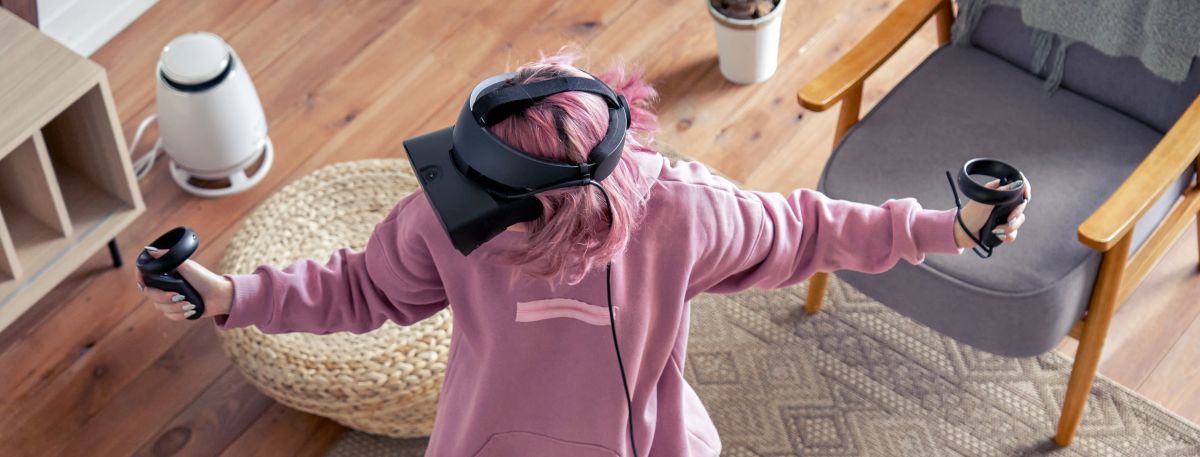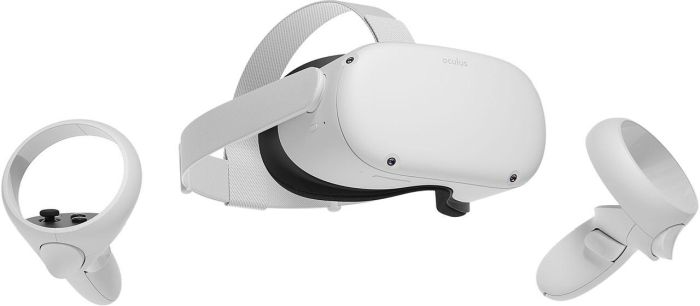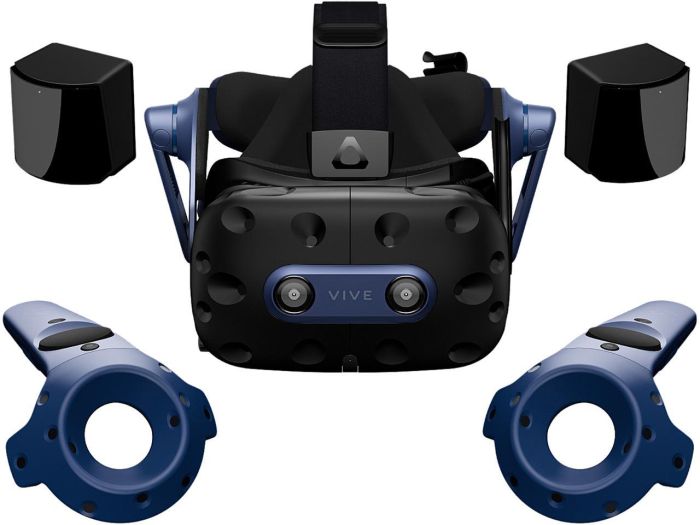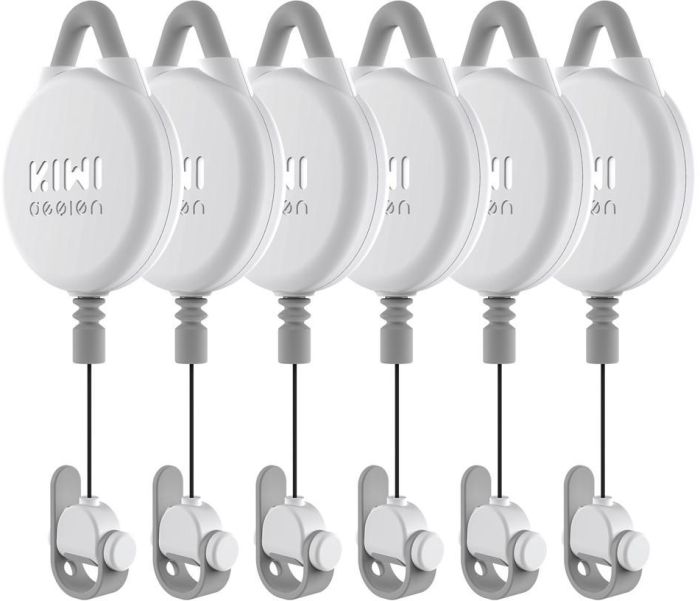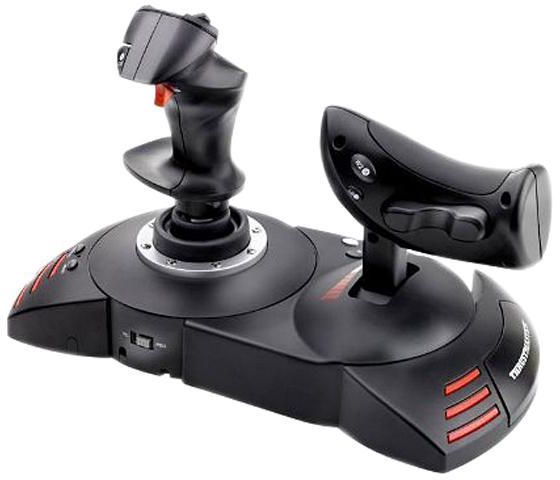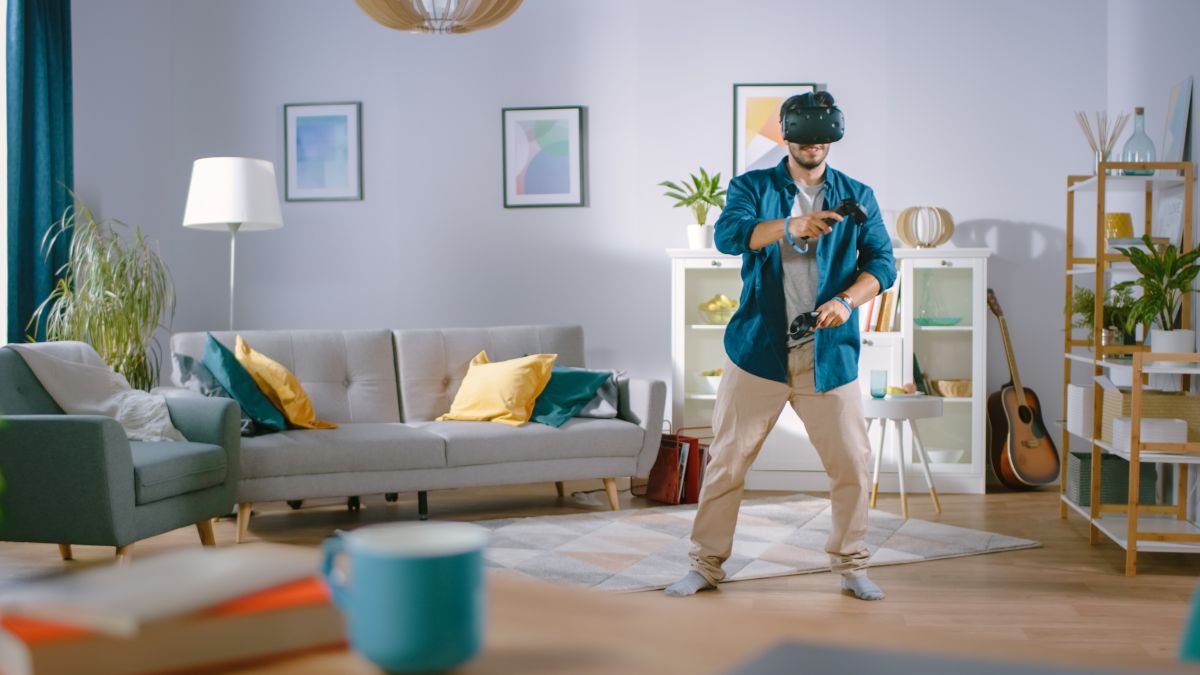
If you want to get into VR gaming, now is the perfect time to get started. A variety of options exist across multiple platforms, from standalone headsets to consoles and, of course, PCs. For more information on choosing the best VR headset, check out our 2022 VR buying guide.
But more important than the hardware, the already-rich library of VR games gets bigger every day. In 2022, some titles we can look forward to are Cities: VR (from the makers of Cities: Skylines), Green Hell, Hubris, and Ultrawings 2.
The future is bright for VR. For those ready to dive into VR right now, we put together this guide to help with first time VR setup.
The Old Adage: System Requirements
Outside the Oculus Quest 2 and other select VR headsets that include all the necessary hardware to play games, most gamers will need to have a decent system in order game at high settings in native resolution. This goes double for high-end high-resolution headsets such as the HTC Vive Pro 2.
With an older headset such as a Valve Index, you can possibly get away with an RTX 20-series for medium settings. In order to get all the visual bells and whistles out of an end headset however, you’ll have the best experience with a high current model card such as a GeForce RTX 3080/3090 or equivalent Radeon 6800/6900.
Check out all our VR Headsets
Making Space for VR
In order to make space for your new VR space, you’ll need to prepare the room and maybe even drill into the walls.
Clear the area
Make sure the play space is free of tripping hazards such as chairs, tables, and anything you can bump into while playing.
Plenty of space
The more space you have for VR, the better. Valve recommends at least 6.5 x 5 feet, though more is better. Both HTC and Valve base stations support a distance up to 16 feet apart, which should give you plenty of room.
Clear the airspace

You gotta make room in your room
Try to use a room with plenty of room overhead with no dangling ceiling light, unless you want shattered bulbs and glass on your feet. Rooms with low ceilings are generally not recommended. If you can barely touch the ceiling on tip toes, that should be enough space.
Setting boundaries
Don’t go all the way up to the walls. When you set your boundaries all the way to the wall, you may find yourself accidentally hitting the wall during gameplay. Instead, set the boundaries so that you have plenty of space for flailing arms.
VR doesn’t like reflective surfaces
Try to eliminate reflective surfaces as they cause controller and headset tracking issues, causing your view to spin around wildly and controllers to jump around. You may end up spending hours going through settings, restarts, and driver reinstalls to fix the issue when the fix could be simple. Even windows might cause the issue with some headsets. In fact, just close the curtains while you’re at it since bright sunlight can also affect tracking.
Power your play with a new Gaming PC
Base stations and tracking
Base stations should be set up on opposite corners of a room, no more than 16 feet apart and angled down towards the user. Ideally, you want to drill into the wall to mount the base stations, though you can get away with stands.
Instead of camera tripod stands, which can take up floor space, consider contractor poles which can sandwich your base station to the ceiling. They take up less space and offer more security against movement.
Avoid storage in direct sunlight
Direct and long term exposure of your VR headset’s cameras to the sunlight will end up damaging the lenses. They can appear as dark spots surrounded by a white circle and fall outside of device warranties. To avoid that fate, store your VR headset in a cabinet or enclosed storage such as a drawer. Short of that, store them in a bag capable of blocking out the sunlight.
Find your center
Use a small rug or mat as a tactile demarcation for the center of your space. This way, you can always find the center with your feet.
Adjust your inter-pupillary distance (IPD)
Upon starting up your VR headset for the first time, you’ll want to adjust the IPD setting. IPD refers to the distance between your pupils and as it varies from person to person, you may find the default setting uncomfortable.
We have tons of VR Accessories
Recommended Peripherals and Equipment
After setting up your VR space, you may want to look into accessories for both convenience and enhancing gameplay.
Ceiling Pulleys
For wired headsets, a ceiling pulley system helps keep cables off the floor and out of the way during play. It allows you to spin your head a little more freely and have less tug caused by the weight of the cables.
Valve Index Controllers
While most VR headsets come with decent enough controllers, Valve Index controllers truly shine through the rest. You can relax your hand and they will still stay firmly attached and also offer individual finger tracking.
Cockpit and Seats
If you like racing or driving games, a sim setup complete with throttle, seat, and wheel or joystick combined with a VR headset offers unparalleled immersion. Old school cockpit setups typically relied of multiple monitors to create a wide field of view, but VR is leaps and bounds better. You will find all types of this equipment in the VR accessories section.
Shop all our PC Game Controllers
Replacement Cushions
While most VR headsets come with adequate cushions for the face, they may not be the best fit for everyone. On top of that, they do wear out and aren’t very sanitary. Depending on your headset, you should be able to find replacement VR face cushions that offer better support.
Oculus Quest 2 Elite Strap with Battery
Happen to have an Oculus Quest 2? The optional Elite Strap and Battery Pack provides better adjustment controls to better position the headset while also providing additional power for extended play time.
On to Gaming!
Once you have all the accessories you need and VR space set up, it’s on to the games. VR games run the gamut from amazing to mediocre, so here’s quick cheat sheet of which games you should be picking up first. You’ll want Beat Saber for the best VR rhythm gaming experience since Dance Dance Revolution.
For FPS gaming, pick up both Half-Life: Alyx and Superhot VR as they scratch different itches. For space and racing simulation, Elite Dangerous and Assetto Corsa offer the best VR support. No matter what genre tickles your itch, you can rest assured the number of VR games will continue to grow.
Get all the tech for your reality at Newegg

